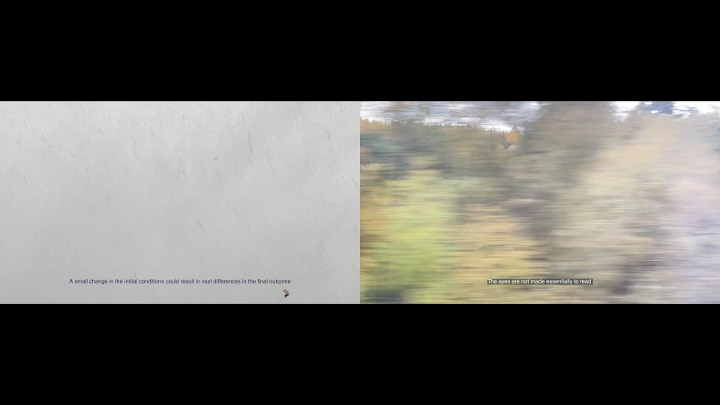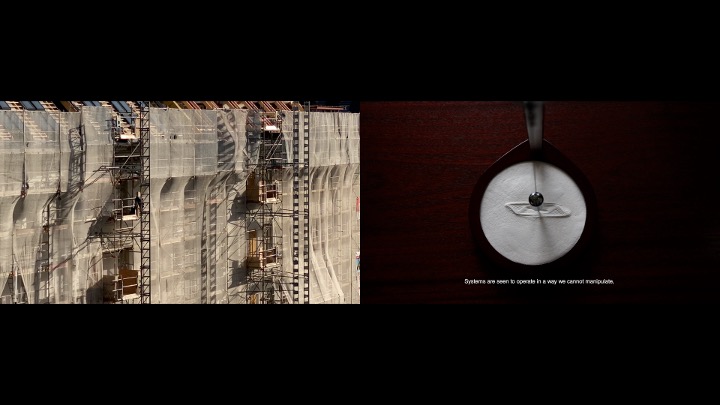"Chaostability", 2 channels video installation, 20 min, Vienna, 2021/2022
What are linearity and nonlinearity? How do they manifest and coexist in our lives? Is a life designed on a linear system capable of progressing smoothly without any flaws? Did we choose to be born, or decide the place and time where we would fall in love, have an accident, or fall ill? Could we have anticipated any war, its survival outcomes, or the loss of everything we once deemed part of a happy, stable existence?
Expected, unexpected, predicted, unpredicted, erratic, uncertain, unstable, chance, serendipity, shocking, accidental, randomness, chaos—these terms reflect the reality that life does not unfold as linearly as we might plan or imagine. Many crucial aspects of our existence demonstrate this truth. Chaos is not disorder but a complex system that remains misunderstood, challenging our perceptions of an organised life.
In this work, I sought to comprehend the complexities of systems that exist side by side—overlapping, intersecting, blending, conflicting, and merging. The film offers an intense visual and conceptual journey, drawing from my research into the state of mind-wandering and the principle of nonlinearity. The narrative and imagery are fragmented and reassembled in multiple sequences and orders, resembling an intellectual labyrinth with various unresolved solutions, open to a multitude of interpretations. Like my other artworks, the text layers multiple connotations, displaced from their original contexts to provoke diverse perceptual responses. Each viewer may discern and interpret the content differently, contributing to the work's nonlinear growth and fostering endless possibilities for interpretation.
As a cinematic experience, the audience is challenged to watch two films simultaneously. This playful manipulation of time compresses 40 minutes into 20 when viewed across both screens, demanding intense concentration as one attempts to follow both narratives, inevitably missing parts of the films as intended. At certain moments, viewers may perceive harmonised patterns in the visuals and sound—a phenomenon crafted by the brain that may not actually exist, or perhaps it's merely an illusion. In today's context, can an illusion be regarded as real if our minds perceive it as such? What, then, is reality?
After launching the one-person cinema experience in 2016, characterised by its immersive, individual, and interactive nature, my research in media and film expanded to encompass a term I recently coined: "Mind-Wandering Cinema." This concept employs a method of writing, screening, fragmenting, and deconstructing the conceptual and visual elements within a space. It draws upon an understanding of the conscious dreaming mind's functionality during states of wander, thus manipulating the concept of time as the fourth dimension of reality. In this state of fluidity, akin to mind-wandering, one can mentally traverse distances and times while remaining physically present such as time travelling mentally.

